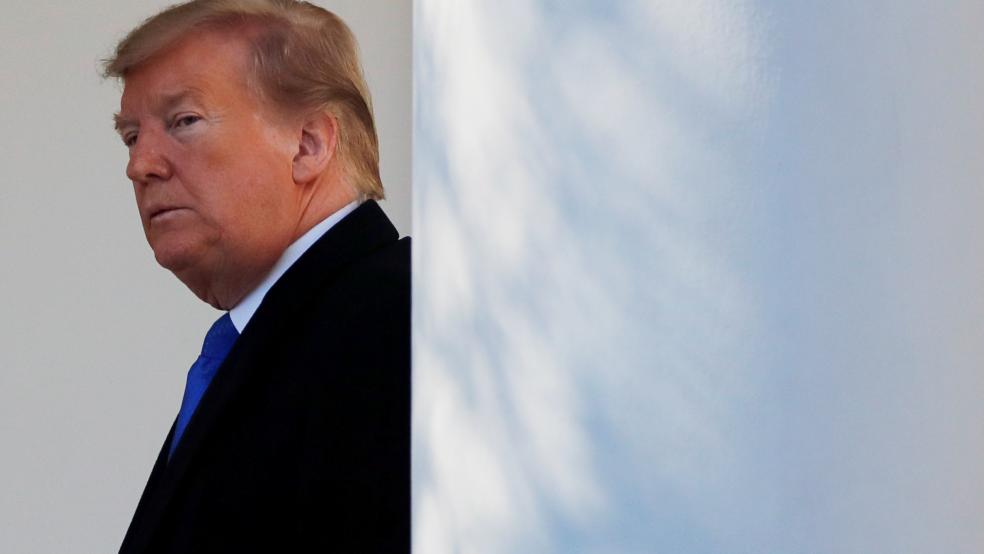President Trump shot down the idea of negotiating a bipartisan two-year spending deal to avoid steep automatic cuts from taking effect next year:
“House Democrats want to negotiate a $2 TRILLION spending increase but can’t even pass their own plan. We can’t afford it anyway, and it’s not happening!” he tweeted Thursday night. (The $2 trillion figure is the estimated 10-year cost of a two-year, $358 spending increase proposed by House Democrats. The increased annual spending under the proposal is assumed to keep growing with inflation over the full 10-year period.)
House Democrats want to negotiate a $2 TRILLION spending increase but can’t even pass their own plan. We can’t afford it anyway, and it’s not happening!
— Donald J. Trump (@realDonaldTrump) April 11, 2019
The background: Under a 2011 law, federal spending is set to drop by 10 percent next year, or $126 billion, unless lawmakers can agree to a deal to once again lift discretionary spending caps.
Senate Majority Leader Mitch McConnell said this week that he and House Speaker Nancy Pelosi had agreed to begin talks on a new two-year deal. "I’m hoping this will be the beginning of a bipartisan agreement, which will be necessary in order to have an orderly appropriations process, not only this year, but next year as well," McConnell told reporters on Tuesday.
The challenges: But as those negotiations get going, they’ll face some obstacles.
First, House Democrats are split on how to divide defense and nondefense spending. They failed to come together this week in support of a 2020 spending plan that called for setting spending levels at $664 billion for defense and $631 billion for nondefense programs. Those intraparty tensions might make it harder to find votes for any bipartisan deal. In the end, though, progressive leaders are likely to sign on to a deal to raise defense spending, with or without serious arm-twisting.
Trump remains a bigger wild card. McConnell reportedly said this week that the president supported the idea of bipartisan talks on a new spending deal. But while congressional leaders want to raise the spending caps, Trump’s tweet — and recent comments from White House officials — suggests that he is willing to let the automatic budget cuts kick in, or at least is staking out a hardline position as an opening bid in the talks.
The White House wants to maintain increased defense spending while avoiding another dollar-for-dollar deal to raise nondefense outlays as well — the opposite of the Congressional Progressive Caucus’s position. Will he agree to sign off on what McConnell and Pelosi negotiate? Or, as the 2020 election nears, will he stick to his proposed spending cuts, which might play well with his base — even if they could slow the economy?
Why it matters: The disarray and likely brinksmanship could all set up another showdown over spending — and a dangerous fiscal cliff toward the end of the fiscal year, when the debt ceiling will also have to be raised.





